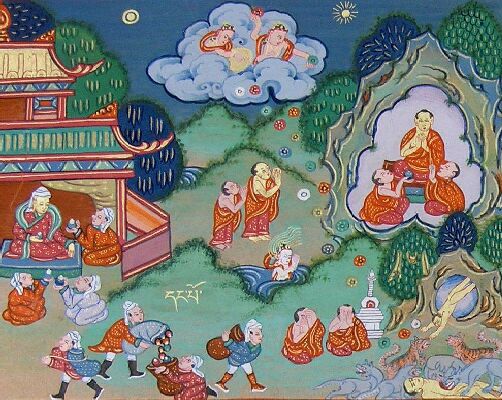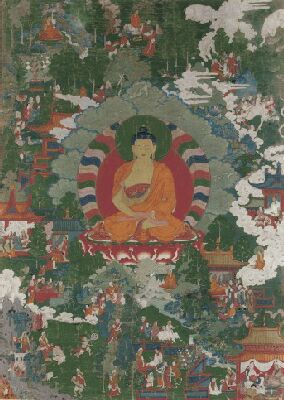The Himalaya:
A Cultural, Religious, and Geographic History
An elective course for high school juniors and seniors
Drew Devore
Episcopal School of Acadiana
Cade, Louisiana
|
Buddhist Stories: The Jataka Tales One of the key ways that people-- both children and adults-- are introduced to the ideas of buddhism is through story telling. Many buddhists living in the Himalaya know very little about the finer points of Buddhist philosophy-- what they know about thier own faith comes from hearing these stories throughout their life. To them Buddhism isn't about meditation and the 8 way path-- it is about living a good life, following the prescribed rituals, and being a moral person. These ideas are all communicated through this stories. Therefore, any understanding of Buddhism in the Himalayas (or anywhere else for that matter) must include a study of these stories. Assignment 1: Your assignment is to read the following selections from the over 500 Jataka tales that exist. As you read them, pay attention to the format (which is a standard format) and to the message that each story is conveying. Come to class prepared to discuss and analyze these stories. Assignment 2: Your second assignment is to construct your own Jataka Tale. Realize that, as we talked about, most of the stories are centuries old and that people just don't write them for fun any more-- but that is exactly what I want you to do. Pay particular attention to the format of the tales, and follow it in writing your own story. Try to think like a buddhist would, and construct your story to demonstrate a point of Buddhist philosophy that we have discussed or you have learned about. |
This site was created by Andrew Devore at the NEH Summer Institute "Cultures and Religions of the Himalayan Region," held at the College of the Holy Cross, Summer 2006







